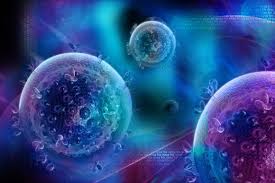Source: newatlas.com
Several major strides have been made towards a cure for HIV in recent years, and now, researchers from the University of California San Diego (UCSD) may have found a new potential target. In lab tests, the team identified a cellular “switch” that could be turned off to clear out the virus lying dormant inside cells.
Currently, people with HIV undergo a life-long treatment called antiretroviral therapy, which suppresses symptoms and keeps the infection from developing into AIDS. But it isn’t a full cure – the virus can lay dormant inside a patient’s cells, ready to start multiplying again if the treatment is ever stopped.
Finding ways to kill the virus while it lays dormant is the holy grail of HIV research, and now the UCSD team says it’s a step closer to a cure. They found that a particular RNA molecule appears to be elevated in people with HIV, and in tests on cultured cells they showed that silencing or removing it prevented HIV from recurring after antiretroviral therapy was stopped.
The molecule is what’s known as a long non-coding RNA (lncRNA), meaning it doesn’t encode for proteins but instead helps control the switching of genes on and off within a cell. The team has dubbed this particular molecule HIV-1 Enhanced LncRNA (HEAL). Interestingly, the HEAL gene appears to have emerged fairly recently, and it regulates HIV replication in immune cells.
“This is one of the key switches that the HIV field has been searching for three decades to find,” says Tariq Rana, an author of the study. “The most exciting part of this discovery has not been seen before. By genetically modifying a long noncoding RNA, we prevent HIV recurrence in T cells and microglia upon cessation of antiretroviral treatment, suggesting that we have a potential therapeutic target to eradicate HIV and AIDS.”
In experiments on isolated human immune cells in the lab, the researchers either silenced HEAL, or snipped it out of the genome using the gene-editing tool CRISPR-Cas9. In both cases, HIV didn’t re-emerge after the antiretroviral therapy stopped.
“Our results suggest that HEAL plays a critical role in HIV pathogenesis,” says Rana. “Further studies are needed to explain the mechanism that leads to HEAL expression after an individual is infected by HIV, but this finding could be exploited as a therapeutic target.”
Of course, this is a very early test, and it hasn’t yet been performed in animals, let alone humans. Still, it’s an interesting new avenue for research into a potential cure.
And it’s not the only one scientists are investigating. Earlier this year a team used a new type of antiretroviral therapy called LASER ART to suppress the virus, then snipped it out using CRISPR – effectively curing the infection in mice. Another team used stem cells to put a man into long-term remission for only the second time ever – but the treatment itself was dangerous, painful and not likely to be recommended to general patients in its current form.
